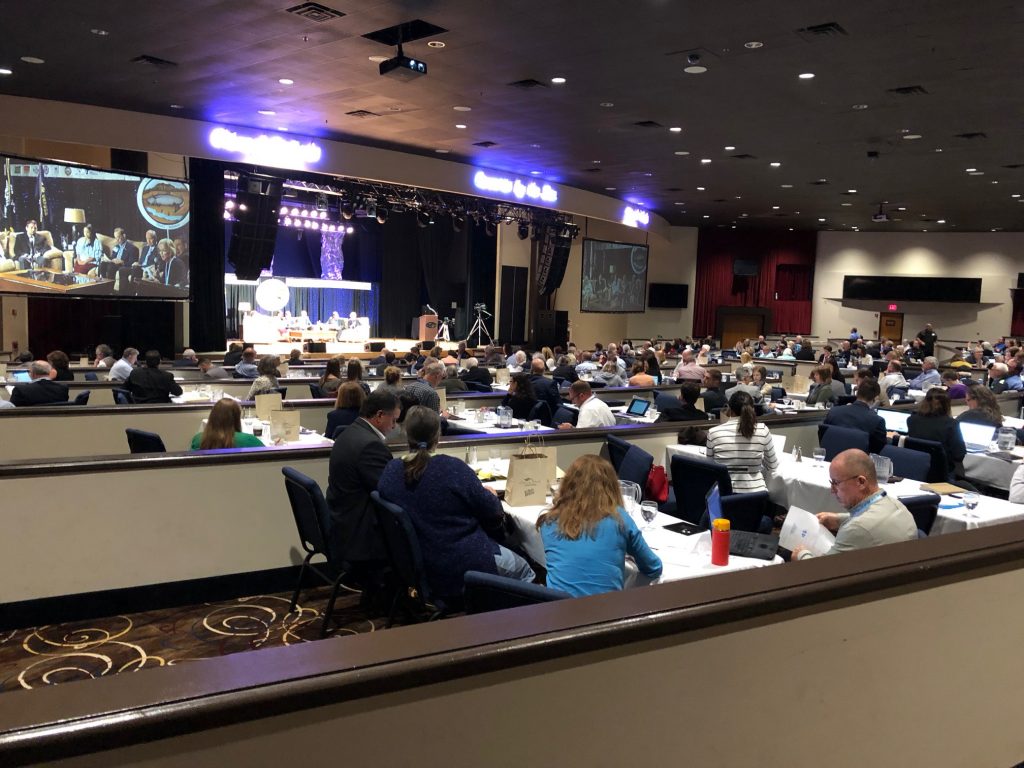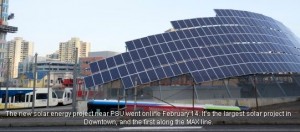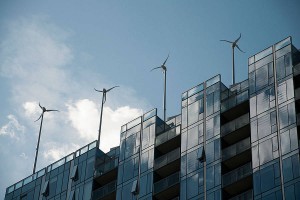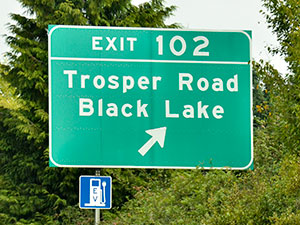 California has largely been “going it alone” on major climate policy, specifically the state’s carbon trading program through cap and trade. But the election today in Washington and Oregon could change that dynamic and possibly usher in a West Coast climate bloc of states willing to tackle carbon directly.
California has largely been “going it alone” on major climate policy, specifically the state’s carbon trading program through cap and trade. But the election today in Washington and Oregon could change that dynamic and possibly usher in a West Coast climate bloc of states willing to tackle carbon directly.
First up, a Washington state ballot initiative (1631) would institute a “carbon fee” that would generate roughly $2.2 billion in its first five years. The money would be spent on carbon-reducing projects like public-transit, energy efficiency retrofits, and new renewable facilities. It would also fund forest and stream projects.
Given the negative impact on the fossil fuel industry, it’s become hotly contested, per E&E News [paywalled]:
In Washington, the ballot initiative calling for an escalating carbon fee is now the most expensive in state history. More than $47 million has been raised for the contest, with oil interests dumping roughly $30 million into opposition to the measure. Microsoft Corp. founder Bill Gates and his wife, Melinda, along with former New York City Mayor Mike Bloomberg, have donated $1 million to the yes campaign.
If it passes, it would be the country’s first carbon tax, as a complement to California’s trading program (which functions as a de facto carbon price based on the price of the carbon allowances auctioned to polluters).
Meanwhile, Oregon has a chance to enact its own cap-and-trade program next year, as I blogged this summer after attending a legislative gathering at the Oregon coast. But it hinges on the current governor, Kate Brown, winning re-election today against a tough Republican challenger, funded in part by Nike founder Phil Knight. If she wins and it passes next year, Oregon could potentially link their program to California’s.
So while most of the nation focuses today on the critical congressional elections, climate policy could take a major step forward in these state races. As the federal government experiences division and inaction in the face of the climate threat, multi-state coalitions like along the Pacific Coast could represent a promising step forward to achieve real national progress.
California has essentially been “going it alone” on comprehensive climate policy in the United States for the last decade or so. But starting in 2019, that might just change. Oregon’s legislature is seriously considering adopting a cap-and-trade program next year, which would signify a major in-country expansion of California’s approach and provide more momentum for multi-state action to address climate change.
This week I’m at the Oregon Coast Caucus Economic Summit in Lincoln City, Oregon, an annual event organized by the bipartisan coastal delegation in the state’s legislature. A key theme of the event is climate policy. Despite the hyper-partisan poisoning of the climate debate around the country, here Republican legislators seem comfortable discussing carbon policies.
Why the difference? Two reasons: first, the Oregon coast is experiencing the negative impacts of climate change, particularly from ocean acidification and its negative effect on local oyster farms. Second, the Oregon coast is impoverished, yet with significant forest resources, leading many coastal representatives to view a state-level carbon policy as an opportunity to generate revenue that can then be spent locally.
The speaker of the Oregon House of Representatives, Tina Kotek, is fully committed to adopting a cap-and-trade (or “cap-and-invest” as they’re calling it) program. But Kotek was rebuffed by Senate President and fellow-Democrat Peter Courtney this year due to the short even-year legislative session and complexity of the issue. However, at their joint lunch panel today, Senator Courtney pledged to bring the issue to a vote in 2019. Insiders I spoke with at the conference believe they will have the votes to pass it. The wildcard, however, is that the current governor, Kate Brown, is up for re-election this year and is facing a tough Republican challenger, funded in part by Nike founder Phil Knight.
But assuming the debate goes forward next year, the contours appeared to reveal themselves at the conference. Some businesses obviously don’t want the program at all, primarily out of fear of higher energy and transportation costs (although Oregon’s grid is already quite green and unlikely to be negatively impacts by any compliance obligations). The trucking industry wants any revenue raised to go to road repair, which would hardly be a way to encourage greenhouse gas reductions. However, this outcome might be unavoidable to some extent, due to a recent Oregon Supreme Court decision that limits funds raised from transportation to highway spending only. But I’m told creative workarounds could be found, such as using any proceeds to fund transit lanes on highways or electric vehicle charging stations along routes. Meanwhile, utilities would like to be exempt entirely from the program, much as they essentially were in the early days of the California program. The list of business concerns goes on from there.
The good news is that all of these issues can likely be resolved with robust discussion, study and debate. And based on what I’ve heard so far at the summit, state leaders are already well on their way. For those who are in favor of multi-state coalitions to address climate change, it’s a welcome sight.
I just returned from a road trip through the Pacific Northwest, including Oregon (Cascades, Willamette Valley and Portland) and Washington (Seattle and the San Juan Islands). So of course I’m now an expert on the environmental trends there, as seen from the window of my car and my conversations with friends and strangers there. Based on this purely anecdotal evidence, I’ve compiled my list of top five environmental trends in the Pacific Northwest.
5) Farm-to-Fork: Lots of great agriculture in the Northwest, and they take advantage of it. Much of the food we ate on our trip, whether purchased at farmers markets, restaurants, or eaten at friends’ houses, came from hyper-local sources. At one cafe in the San Juan islands, all food was either grown at the farm on-site or traded/purchased from other local farms, including a nearby brewery.
4) Rail Transit: Portland and Seattle are undergoing a light rail construction boom. Seattle just recently began theirs, and we saw new tracks going in near the downtown, while Portland’s MAX system is extending south of the city. Plus Portland has a cool-looking (although I gather cost-ineffective) gondola tram linking two parts of their hospital complex that are separated by a hill.
3) Renewable Energy: Particularly in Oregon, we saw some innovative renewable energy arrays. Portland State University features the first solar “arch” that I’ve seen (photo right),
while another building in downtown had cool-looking wind turbines up top (photo left).
Bonus points for its energy efficient ventilation system through windows that can open to the street (remarkably unusual in most skyscrapers).
2) Infill Development: Portland and Seattle featured cranes galore on multistory apartment buildings near their downtowns. Seattle’s trendy Eastlake neighborhood and Portland’s Pearl District stood out to me for construction in these transit-friendly neighborhoods. One negative: Seattle’s Safeco Field baseball park has failed to stimulate much development in the otherwise industrial area south of downtown. I can only assume it’s a failure of planning and financing, but maybe it’s just not a great area for homes and businesses given the industrial activities going on.
1) Electric Vehicles: while California is still the leader here, Oregon features great signage for EV charging stations along the highway (see photo on the right).
Washington State also seemed to have a good presence of EVs on the road. We even saw a Tesla Model S on Orcas Island in the San Juans (an hour ferry ride from the mainland) with California plates! If that car wasn’t shipped there, then that’s a real coup for Tesla’s supercharger network along I-5.
Overall, it’s great to see other West Coast states making such progress on environmental and energy needs. One area of improvement: Washington State should definitely improve its tailpipe regulations — cars and trucks there are quite smelly and polluting. And of course we need both states to join California’s cap-and-trade market. But I’m confident that in the long run, the West Coast will help lead the country in smart policies to clean the environment and build a sustainable economy.






